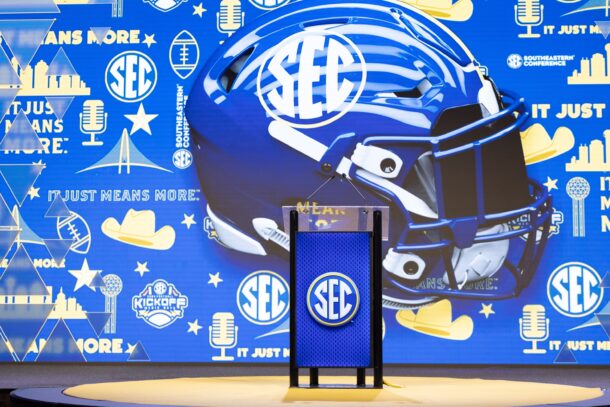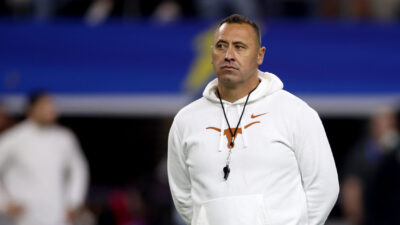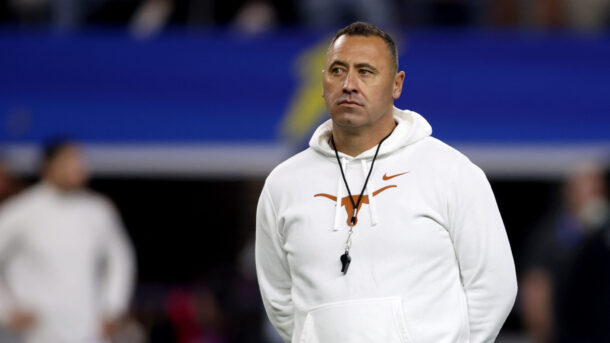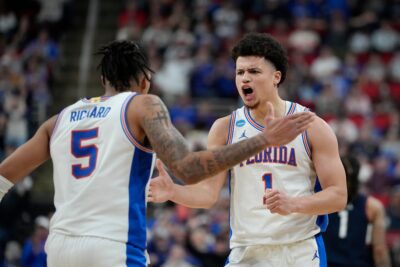Ad Disclosure
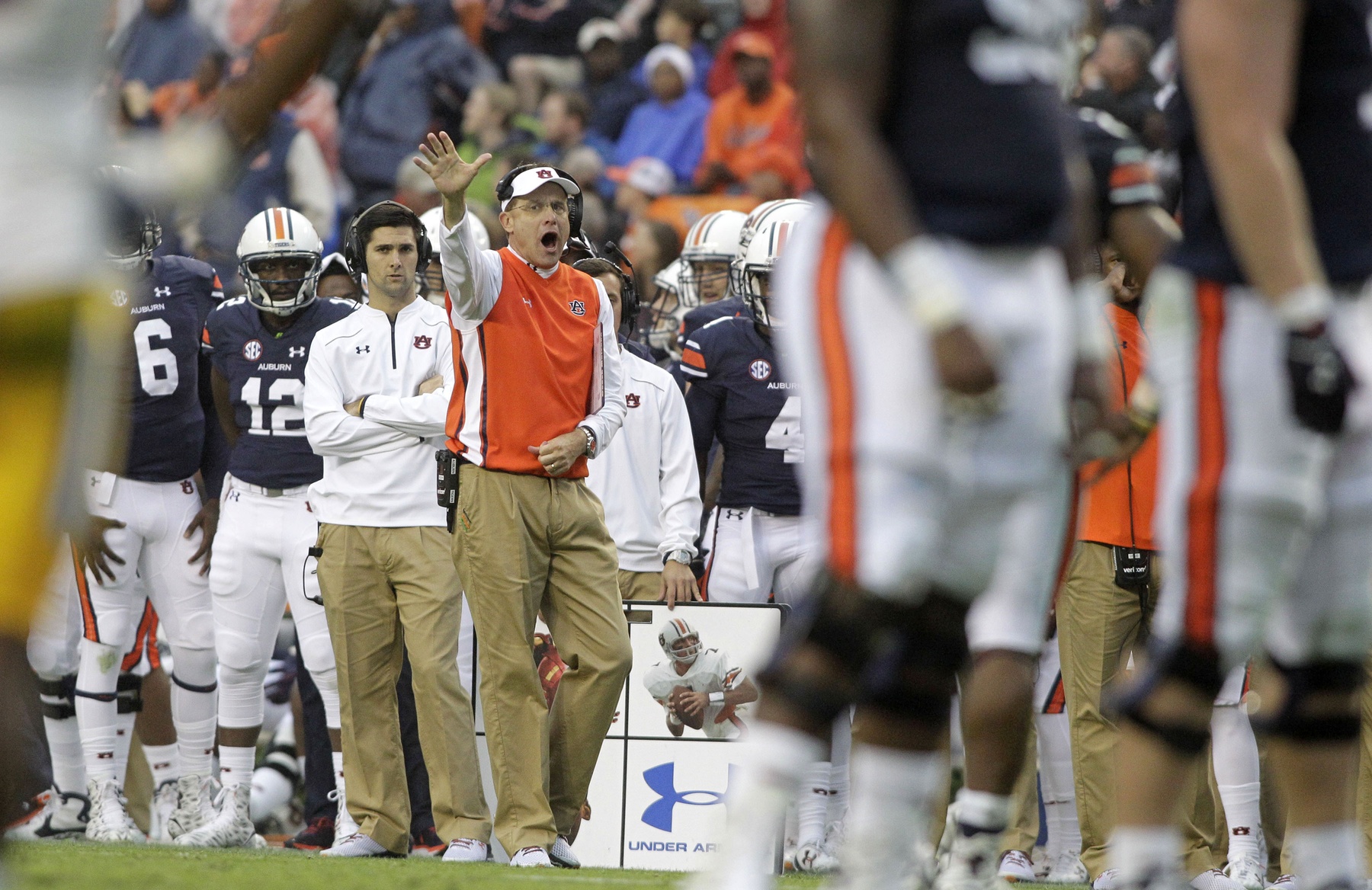
Believe it or not, this post started with Gene Chizik. In 2008. Bear with me.
To say that Auburn’s hire of Gene Chizik as head coach in December 2008 received almost universal criticism would be something of an understatement. At best, it seemed like the hire of someone the “important” folks in the program could control; at worst, it looked kind of racist. Chizik was a universally liked fellow, with a decent (but not great) track record as a defensive coordinator; as a head coach, he had posted two lousy seasons as Iowa State (admittedly a football graveyard) and nothing else.
Chizik and AU redeemed themselves almost immediately, however, when they brought in the up and coming Gus Malzahn as offensive coordinator. One of the overriding stories of Tommy Tuberville’s miserable final season at Auburn was his tenuous relationship with offensive coordinator Tony Franklin, who apparently came to The Plains against Tuberville’s will, spent half a season attempting to put in his vaunted “System” with little to no help from his boss, then received a pink slip almost as quickly as things turned south. Tuberville and most of his staff followed later that year.
With Malzahn, Auburn was essentially signaling a change in the direction of its football philosophy.* No longer would the Tigers resemble their traditional selves: a rugged football team that relied on its defense and an offense that kept things between the tackles; Malzahn’s arrival was a tacit admission that Auburn was about to, in the traditional parlance of football, “open things up.”
*It has often been a fascination of mine that some football programs identify themselves not just as winners, but with a certain style of football. One of Will Muschamp’s failures as head coach at Florida wasn’t just that he couldn’t win, but that his offenses were putrid, and Florida fans will not abide bad offense. It simply isn’t them.
Quietly, though, one question did come up as Auburn fans celebrated the hiring of Malzahn: if the Tigers were truly transitioning to an up-tempo, wide-open offense, what would happen to their vaunted defense? Even Tommy Tuberville’s worst years at Auburn were marked with strong defenses that kept the Tigers in games; during his last season — a miserable 5-7 campaign that ended with a 36-0 thud at Alabama — Auburn remained in the top 30 in defense, surrendering less than 5 yards per play (as we noted earlier, the issue with 2008 Auburn wasn’t its defense under the ultra-proud Paul Rhoads, but a depressing cluster on offense under Franklin and a staff that hated his guts).
Indeed, Auburn had long enjoyed a tradition of rugged defense that included such names as Tracy Rocker, Quentin Riggins, Takeo Spikes, et al. Jumping aboard the Gus Bus, some feared, meant eschewing dominant D in favor of outscoring the opposition.*
*Some could argue — with some success — that Auburn attempted this culture shift under Terry Bowden, who was often guilty of ignoring his running game in favor of a spread attack that resembled Steve Spurrier’s Fun ‘N Gun at Florida. I frankly have neither time nor resources to research Auburn’s overall performances on offense and defense during that era. I remember those defenses being … OK, I guess? Whatever, we’re getting off track.
Auburn regressed as a defensive football team during the Chizik years, never finishing higher than 60th nationally in total defense. That high water mark came in 2010, when Cam Newton fell out of the sky and landed on The Plains, leading an offense that destroyed all sorts of records on the way to the national championship. The Tigers finished 56th nationally in total defense, but so what? They made enough plays to hoist the trophy, and that was enough for most.
What is less clear is how much the offense is to blame for that regression. Chizik clearly believed the two were related; according to lore, he told Malzahn prior to the 2011 season — coming off a national title, mind you — that he needed the offense to slow down, that the tempo game was killing them on D.
After that 2011 season — Auburn was 80th nationally in total D, and the offense turtled after showing some initial promise. (Malzahn left treadmarks leaving town to take the head coaching job at Arkansas State.) The 3-8 Tigers of 2012 — featuring Scott Loeffler running what I affectionately termed the “Facepalm Offense”* — were the 81st ranked total defense in America, enough to end Chizik’s tenure at Auburn, as well.
*Loeffler is now running the offense at Virginia Tech.
The question remains, though: is it possible to be a strong defensive football team when your offense is playing uptempo?
Take Alabama, for example. For all his ballyhoo as a defender of the “pro style” approach to football, Nick Saban turned his offense loose in 2014, allowing Lane Kiffin to run an up-tempo, high-powered attack featuring the nation’s best wide receiver. Alabama’s offense jumped from 34th in the nation in yards per game to 18th in the first season under Kiffin. The defense dipped, however, from fifth overall in 2013 (287 yards per game) to 11th in ’14 (312 ypg). The end of the season was particularly gruesome: Ohio State rang up 537 yards in the Sugar Bowl, averaging more than 6.8 yards per play in a 42-35 victory.
For Saban, there was no coincidence.
… (I)f we’re going to be a no-huddle team like we were last year, I think we have to manage the season better with our team, because I think at the end of the season last year, we ran out of gas a little bit. We played more plays, I think by 170 on defense, which is like a couple, three more games. And our players showed it. So we’re going to have to do a better job of keeping our team where they need to be so that we can finish strong.
The logic of the longtime football observer vs. the up-tempo attack is relatively simplistic: Your offense is playing at a higher rate of speed, which equates to less real time for its counterparts on the defense to rest. “That no-huddle stuff looks great when they’re breaking big plays and chewing up the field,” goes this line of thinking. “When they go three-and-out, then your defense is right back on the field with no rest. Eventually, they get tired.”
Some actually have seen it in action this season — as Alabama attempted fourth-quarter comebacks twice against Ole Miss in September, ESPN color analyst Todd Blackledge noted that the vaunted Rebels defense “looks gassed,” possibly weary from a mounting number of snaps granted Alabama by its pass-happy, up-tempo attack.
How does this logic stack up with actual data? Below is a list of the top-10 teams in total yards per game thus far in 2015, with their ranking in the number of plays their offenses ran in parentheses:
Michigan (67th in total offensive plays, 72.7 per game)
Boston College (95th, 68.8 ppg)
Pittsburgh (120th, 65.2 ppg)
Boise State (22nd, 79.6 ppg)
Alabama (33rd, 77.7)
Duke (42nd, 76)
N.C. State (64th, 73.4)
Penn State (119th, 65.3)
Wisconsin (66th, 73)
Missouri (87th, 69.6)
Just for fun, are the top-10 teams in plays per game, with their yards per game allowed on defense ranking in parentheses:
Tulsa (124th, 553.6 ypg)
West Virginia (26th, 334.8 ypg)
Bowling Green (112th, 488 ypg)
Cincinnati (86th, 435.2)
Washington State (99th, 453.2)
Houston (70th, 412.8)
Indiana (100th, 454.8)
Rice (113th, 488.6)
Vanderbilt (39th, 365.2)
Oregon (102nd, 459.8)
As is obvious, there’s not much overlap between the nation’s best defenses and teams that value a high play volume.
Which, of course, raises the question: how important is defense, really?
We can, I think, all stipulate that defense no longer exists in professional football, at least not in any meaningful fashion. Offenses are too sophisticated, and every offseason the rules change in a way that puts the defense at more and more of a disadvantage. At this point, an NFL defense isn’t allowed to hit the quarterback under any circumstances; isn’t allowed to dish out big hits to receivers; isn’t allowed to cover said receivers with much effectiveness;* and is subject to all sorts of holding, tripping and other illegal acts from the offensive line, most of which the officials let pass.
*At this point, any time a pass is somehow not completed in pro or college football, you can expect everyone on the offense and all the fans in the stands to howl for a pass interference flag. It’s part of the culture.
Most of this is done in the name of “player safety,” but is really about making the sport more entertaining (since casual fans aren’t gravitating toward a 9-6 football game).
And so the teams that are built around their defense — Baltimore, San Francisco, Houston — are mostly left out of anything meaningful. Offense wins games, sells tickets and — with the notable exception of Seattle — wins championships these days.
College football is trending in the same direction. In 2014, among the top-10 defenses in yards per game, only Michigan State finished in the top-10 nationally as a squad. Baylor, Oregon and eventual champ Ohio State were all in the top-10 offensively, and others like Alabama and Georgia Tech finished in the top-20.
Which, of course, brings us back to Auburn. Since Malzahn matriculated back to The Plains as head coach, it’s not as though he fixed any of the woes for his defense — in 2013-14, Auburn finished 87th and 61st, respectively, in total defense — but the Tigers still came within a possession of a national championship in his first season, and were ranked in the top-5 late in his second. They are no better under new defensive coordinator Will Muschamp — at the moment the Tigers are 69th nationally in total defense — but their underwhelming results are as much due to a lackluster offensive showing than anything else.
See, the best teams in football these days aren’t as worried about being dominant on defense, only being good enough.
Will Heath is a contributing writer for Saturday Down South. He covers SEC football.
